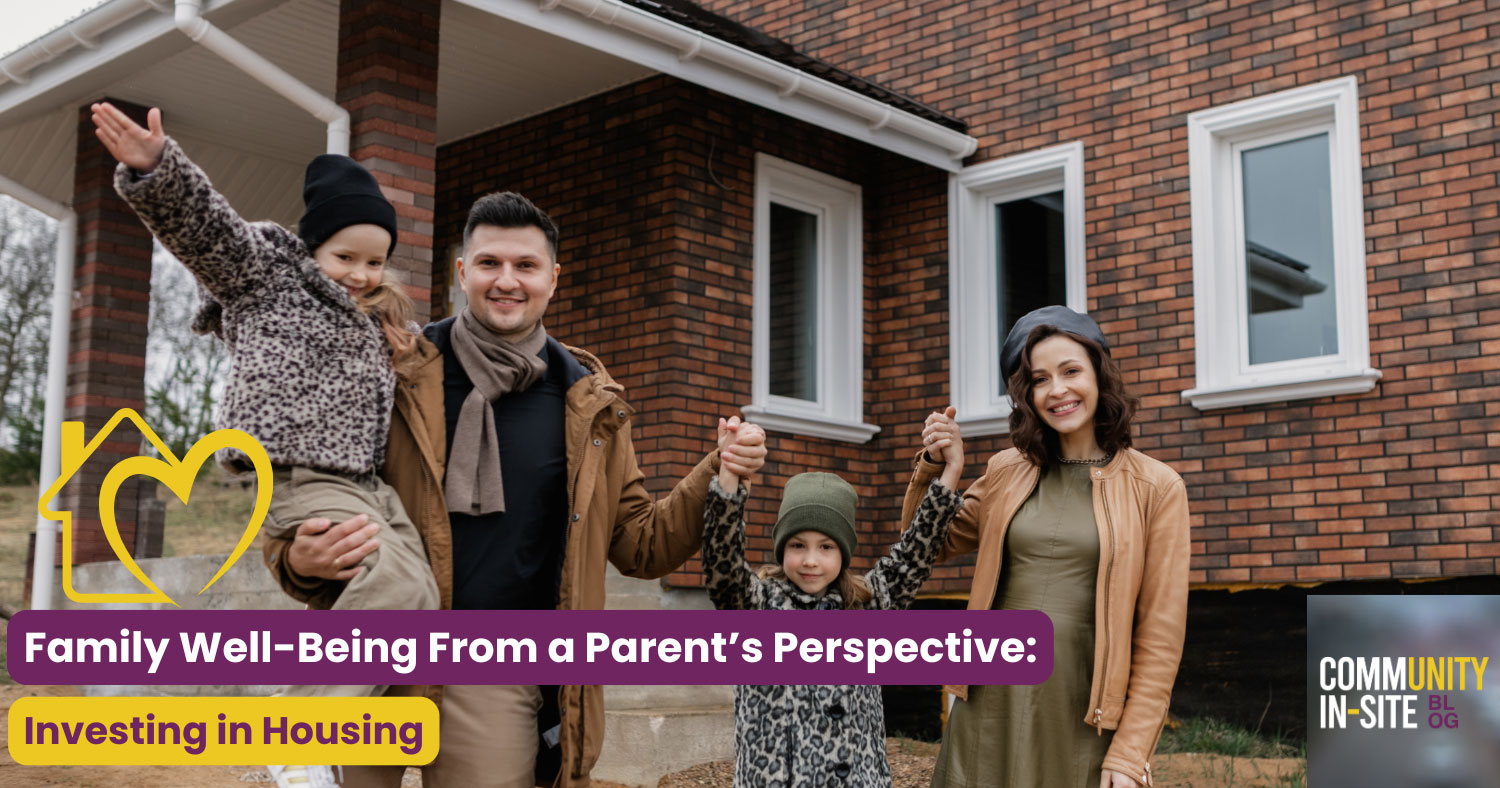
Family Well-Being from a Parent’s Perspective: Investing in Housing
By: Valerie Frost
Parenting is a journey full of highs and lows, but for some families, the lows come with serious repercussions.
In the U.S., lack of access to affordable housing is a key factor in family instability and child welfare involvement. In fact, inadequate housing contributes to at least 10% of foster care removals, delaying reunification and increasing risk of permanent separation.
As a parent, I understand the importance of a stable home. While navigating the child welfare system, I lived in public housing. And while I was grateful, I always felt like I was on shaky ground. After two Child Protective Services interventions, I’d had enough and sought help to become a first-time homeowner. Owning a permanent home has brought my family security, peace, and a solid foundation to build our lives.
Not every family has that opportunity, and the consequences can be severe.
In 2022, around 369,000 children were in foster care in the United States. A significant portion of these removals, approximately 36,900 children, could have been prevented with access to affordable housing. The reality is simple: when rents are high and wages are low, parents have few options.
The 2024 “Out of Reach” report shows that the Housing Wage—what one needs to earn per hour to afford a modest rental without spending over 30% of their income—far exceeds the wages in many common occupations. For example, a two-bedroom rental requires $32.11 per hour, while a one-bedroom requires $26.74 per hour. Yet, 14 of the 20 most common jobs in the U.S. pay less than that.
Cost isn’t the only barrier to securing housing. Families also face systemic challenges that make finding a stable home even harder. Many landlords are reluctant to rent to families who receive assistance or who have past evictions or criminal records. On top of that, there are long waitlists for housing vouchers and frustrating delays in the paperwork process.
The pandemic brought a temporary reprieve for many families facing eviction, with the eviction moratorium offering protection and allowing families to stay in their homes. During that time, the number of children removed from their homes due to housing instability dropped by 33% in Wisconsin alone, demonstrating that stable housing significantly reduces the likelihood of children being removed from their care.
So why are we still allowing families to lose their children due to housing instability when we know that providing housing can prevent these separations?
When children are removed, foster parents often receive stipends exceeding $3,000 a month for three children in certain states. If we redirected even a fraction of the funds currently spent on foster care stipends toward helping families secure stable housing, we could significantly reduce child removals.
By investing in stable housing, we could help families remain intact, avoid the trauma of foster care, and reduce the significant financial burden on the child welfare system.
One bright spot in this conversation is Wisconsin’s Family Keys program, which has demonstrated that addressing housing instability upfront can prevent child removals and keep families intact. The program provides flexible funding to local communities, allowing for tailored solutions, such as housing navigators who help families access housing resources and build relationships with landlords. It also offers risk mitigation funds to incentivize landlords to rent to families facing housing instability.
The Family Keys program not only supports families but also offers significant cost savings compared to the traditional out-of-home care system. In 2023, the program kept 38 children in Marathon County out of foster care (plus 3 children who were reunified), resulting in a net saving of $248,845. By prioritizing housing and keeping families intact, Family Keys proves to be a more humane and cost-effective approach, saving taxpayer dollars while improving outcomes for both children and parents.
When we consider the financial and emotional costs of foster care, the solution is clear: invest in housing. This approach supports the immediate well-being of families and fosters the long-term health of our communities.
As we look to the future, I encourage communities to explore models like Wisconsin’s Family Keys approach and consider how similar programs could work in their own neighborhoods. By prioritizing stable housing and preventing family separation before it happens, we can create a better, stronger future for all children and parents, where families thrive.
If you are interested in learning more about the Family Keys program and how it can be adapted to your community, please complete the interest form to get involved.
This blog is part of a series connected to the Community In-Site podcast, where we dive deeper into the stories and lessons from the growing family well-being movement. To hear more about how you can support families and strengthen communities, check out the podcast at thrivingfamiliessaferchildren.org.
This project was funded by the Annie E. Casey Foundation. We thank them for their support, and acknowledge that the opinions and conclusions presented in the blogs are those of its authors alone, and do not necessarily reflect the opinions of the Foundation.







